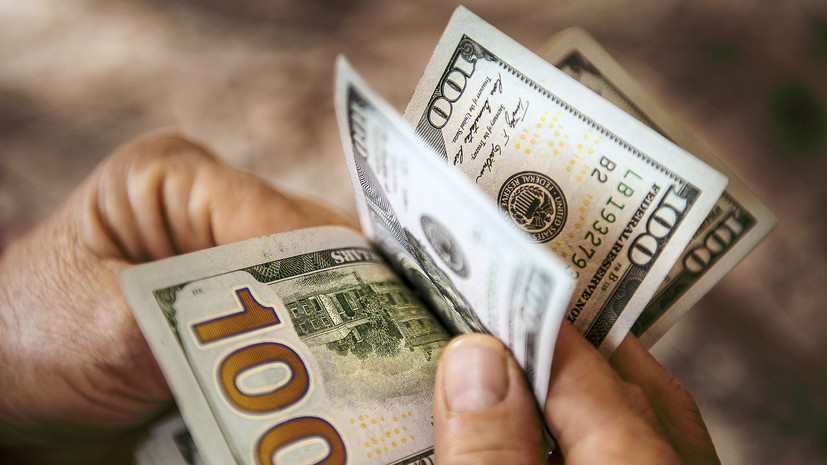On Tuesday, March 24, the Russian currency appreciably appreciates on the Moscow Exchange after weakening the day before. In the middle of the day, the dollar depreciated by 1.8% - to 78.1 rubles, and the euro - by 0.6%, to 84.9 rubles.
The official exchange rate of the Central Bank on March 25 was 78.85 rubles per dollar and 85.43 rubles per euro.
Interviewed RT analysts attribute the observed appreciation of the Russian currency to the American one with a moderate weakening of the dollar in the world market. The corresponding DXY index fell by almost 1.5% to 101 points. Such data are provided by the international exchange ICE.
The experts interviewed RT called the cause of the observed dynamics the actions of the US Federal Reserve System, which acts as the country's central bank. On March 23, Fed officials announced an unprecedented expansion of the quantitative easing program. To support the economy under the conditions of the coronavirus, the regulator plans to buy bonds in the stock market in an unlimited volume.
“The Federal Committee for Open Market Operations will procure treasury securities and government mortgage-backed securities in the quantities necessary to maintain stable functioning of the market and the effective impact of monetary policy on general financial conditions and the economy,” the Fed said.
According to official data from the World Health Organization (WHO), the total number of coronavirus infected in the world exceeds 330 thousand. At the same time, there are more than 41 thousand patients in the United States.
According to experts from the Institute of International Finance, as a result of the spread of infection and the introduction of quarantine measures, the United States runs the risk of recession. So, according to the results of 2020, the country's GDP may decline by 2.8%.
As expected, the Fed's policy should lead to an increase in the money supply in the economy and help to increase the GDP growth rate. At the same time, the Fed’s actions run the risk of weakening the dollar in the long run.
“The dollar turned to decline after almost significant growth against a basket of major currencies by almost 10% in the previous two weeks. Amid the panic caused by the coronavirus in the markets, investors massively bought dollars. Now, cutting interest rates to zero and announcing the start of unlimited purchases of corporate bonds has laid the foundation for weakening demand for the dollar, ”EXANTE managing partner Alexei Kirienko told RT.
Recall, the Fed actively pursued a policy of quantitative easing after the start of the 2008 crisis. To stimulate the national economy, the regulator turned on the printing press and bought up securities on the issued money. As a result, from 2008 to 2015, the value of acquired assets on the Fed’s balance sheet increased from $ 8.9 billion to $ 4.5 trillion. Such data are presented on the official website of the regulator.
In 2017, the Fed announced a quantitative tightening program and began selling assets from its balance sheet. By September 2019, the amount of securities available to the Fed dropped to $ 3.7 trillion. However, from the beginning of autumn, the regulator began to buy bonds again, and today the volume of assets on the regulator’s balance sheet is close to $ 4.67 trillion.
“Back in early March, the Fed's balance sheet was about $ 4.3 trillion - about 20% of US GDP, which is already quite a lot. Nevertheless, this amount can easily increase at least twice, ”said Arseniy Dadashev, director of the Academy of Financial Management, in a conversation with RT.
Stock optimism
Global investors reacted positively to the decision of the US Federal Reserve. So, after a long fall in the last few weeks at the March 24 auction, stock quotes of most countries of the world showed steady growth.
As a result of the Asian session, the indicator of the Shanghai SSE Composite Exchange grew by 2.34%, and the Japanese Nikkei - by 7.13%. At the same time, during trading on European markets, the French CAC 40 index grew by 7%, the English FTSE 100 - by 6.8%, and the German DAX index - by 9.2%.
The same dynamics was shown by American stock quotes. At the beginning of trading, the Dow Jones industrial index added about 9%, corporate S&P 500 - 7.7%, and high-tech NASDAQ - 6.7%.
“The Fed is doing everything possible so that debt markets do not collapse. Such actions affect the mood of global investors. Therefore, the players took the Fed statement as a positive trend, which led to an increase in stock quotes and a number of currencies, ”said Alexander Abramov, head of the laboratory of the Institute of Applied Economic Research of the Russian Presidential Academy of National Economy and Public Administration, in an interview with RT.
Although the active injection of money into the US financial system should support the economy and markets, the actions of the regulator, in addition to weakening the dollar, risk leading to a sharp jump in inflation in the country.
“The decline in US production against the backdrop of rising money supply could trigger inflationary risks. There is a likelihood of a sharp jump in consumer price growth, and this can happen at the most unexpected moment, ”concluded Alexander Abramov.

